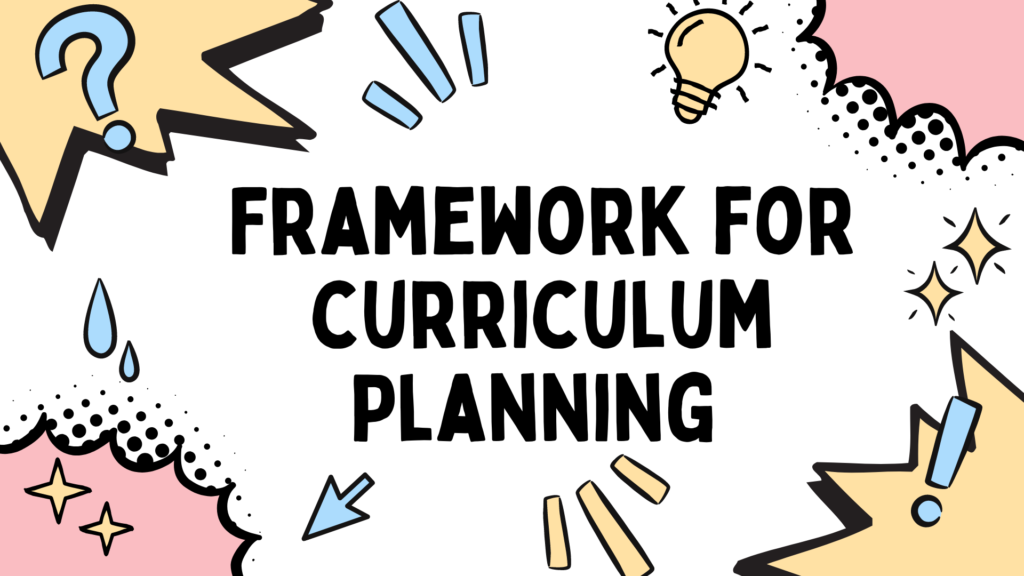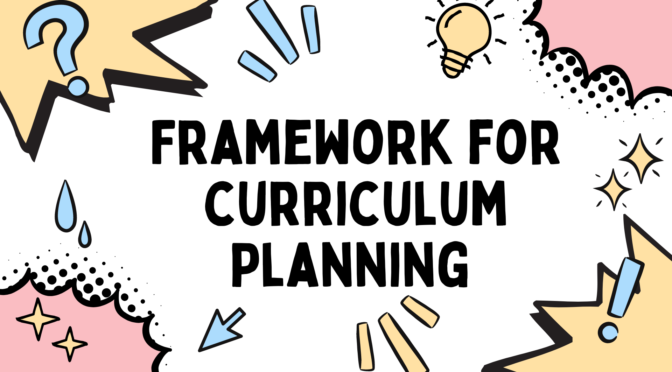Curriculum planning is the process of designing and organizing a course or program of study. Curriculum Planning framework involves identifying learning goals, selecting appropriate learning activities and resources, and developing assessment strategies to measure student progress.
Here is a basic framework for curriculum planning:
- Conduct a needs analysis: Before developing a curriculum, it’s important to conduct a needs analysis. This involves identifying the needs of the students, the goals of the program, and the context in which the curriculum will be delivered. This information can be gathered through surveys, focus groups, interviews, or other methods.
- Define learning outcomes: Once you have a clear understanding of the needs and goals of the program, you can define the learning outcomes. Learning outcomes are specific, measurable, and observable statements that describe what students should know and be able to do by the end of the program. They should be aligned with the program goals and informed by the needs analysis.
- Design the curriculum: The curriculum design involves deciding on the content, instructional methods, and assessment strategies that will be used to achieve the learning outcomes. This can be done through backward design, which involves starting with the desired learning outcomes and working backwards to identify the content, instructional strategies, and assessments that will help students achieve those outcomes.
- Develop instructional materials: Once the curriculum design is complete, you can start developing the instructional materials. This could include textbooks, handouts, videos, online resources, or other materials. Make sure the materials are aligned with the learning outcomes and are appropriate for the target audience.
- Plan the instructional strategies: Instructional strategies are the methods used to deliver the content to students. This could include lectures, discussions, group work, simulations, or other strategies. Consider the needs and preferences of the students when selecting instructional strategies.
- Develop assessments: Assessments are used to measure student progress toward the learning outcomes. This could include quizzes, exams, papers, projects, or other assessments. Make sure the assessments are aligned with the learning outcomes and provide meaningful feedback to students.
- Implement the curriculum: Once the instructional materials, strategies, and assessments are developed, you can implement the curriculum. This involves delivering the content to students, providing feedback on their progress, and making adjustments as needed.
- Evaluate and revise the curriculum: After implementing the curriculum, it’s important to evaluate its effectiveness and revise it as needed. Collect feedback from students, instructors, and other stakeholders to identify areas for improvement. Use this feedback to refine the curriculum and make it more effective for future students.
Also Read : Improvement of Curriculum Planning
By following this detailed framework, you can develop a comprehensive and effective curriculum that meets the needs of the students and achieves the program goals.
Also Visit : Prep with Harshita



18 thoughts on “Curriculum Planning Framework”